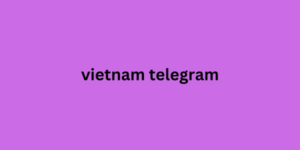Stage 1: Audience analysis and preparation of a unique selling proposition (USP)
Decide who you want to sell the product to. There is no point in spending advertising funds on a non-target audience that will definitely not be interested in your offer.
Study the socio-demographic characteristics of your consumers. Their interests, values, desires, lifestyle and hobbies. Find information using different methods: for example, analyze search queries and pages in social networks, conduct surveys and focus group questionnaires.
Segment your target consumers according to their key vietnam telegram characteristics and develop a USP for each part – the main distinguishing features of your product from others. Show customers why your offer is better than your competitors.
For example, lower prices, delivery times, quality of goods/services. The main thing is that it is truly unique. Based on the analysis of the audience and USP, develop a sales strategy and select communication channels.
Step 2: Attracting Cold Clients
After creating the target audience profile, establish the first contact. The most important thing at this stage is to attract the attention of potential clients and show them the product. The goal is to make maximum traffic and get a large number of target consumers at the output.

Stage 2: Attracting Cold Clients
Source: shutterstock.com
On the Internet, this is mainly achieved through contextual advertising and SMM. In offline marketing, cold calls, outdoor advertising, leaflet distribution and promotions are often used to increase contacts.
Step 3: Generating Interest
The next step is to convert “cold” clients into “warm” ones. In other words, to interest them. The goal of this stage is to get contacts and establish communication. At this stage, there may be quick sales, but don’t count on it.
Step 4: Handling Objections
This is where most customers have objections. They are interested in the product itself, but they are not yet sure whether it is worth buying from you.
There are different ways to work with objections. For example, passively, when the client himself comes to the conclusion that his fears are in vain, without the help of a manager. A landing page will help with this - a one-page site that tells about the advantages of the product and its benefits for the buyer. There must be a section here - "Frequently Asked Questions" ("FAQ" or similar), to dispel the doubts of the most distrustful visitors.
You can work with objections on other platforms as well - in social networks, blogs, newsletters. Universal rule: competently present the USP of the product and convince the buyer that your offer is the best.
Step 5: Closing the Deal
The customer is ready to buy the product. But even here the deal can be disrupted. For example, because the buyer did not understand the payment and delivery or forgot about the products in the basket.
In such situations, contextual advertising uses retargeting: a banner that “catches” website visitors on other sites. The abandoned cart function in CRM can also help. This system looks for visitors who have not completed their purchase. Then it sends them automatic messages, such as reminders and special offers.